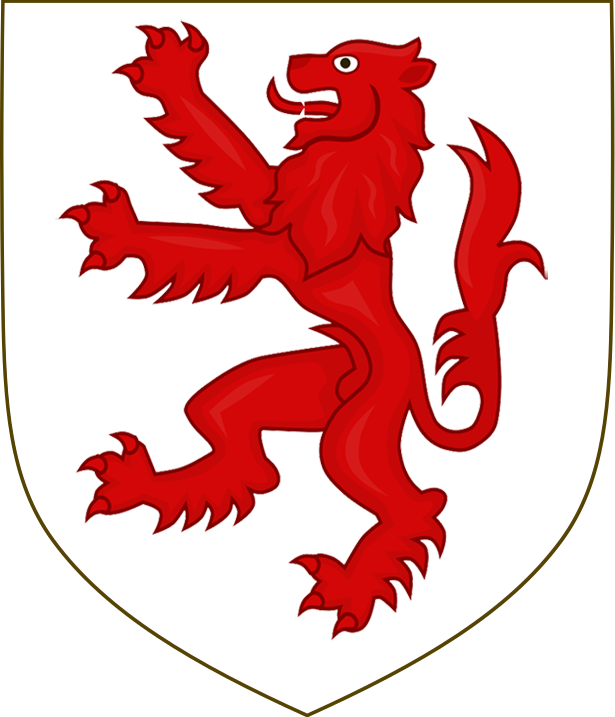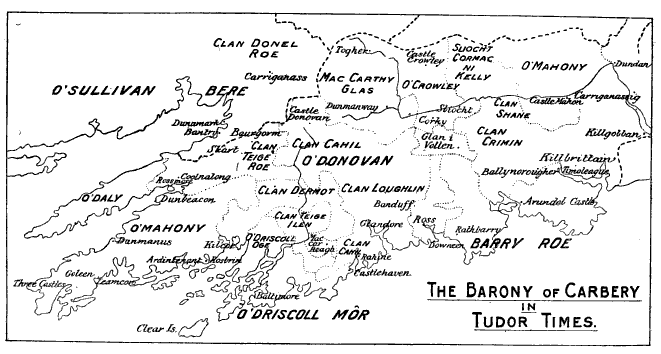|
King Of Leinster
The kings of Leinster ( ga, Rí Laighín), ruled from the establishment of Leinster during the Irish Iron Age, until the 17th century Early Modern Ireland. According to Gaelic traditional history, laid out in works such as the ''Book of Invasions'', Leinster originates from the division of Ireland between the Irish Gaels, descendants of Milesius: Leinster was one of the territories held by the offspring of Heremon. In the 7th century BC, the branch of the Heremonians who would establish Leinster, starting with Úgaine Mór were also High Kings of Ireland and Kings of Tara. Their ascent to hegemony in Ireland was associated with the decline in influence of their Ulster-based Heremonian kinsmen from the Érainn. Aside from Úgaine Mór, other prominent Kings of Leinster from this period who were also High Kings of Ireland were Labraid Loingsech and Cathair Mór. A mythology developed that Labraid Loingsech had horses ears: he spent some time exiled in Transalpine Gaul (da ... [...More Info...] [...Related Items...] OR: [Wikipedia] [Google] [Baidu] |
Úgaine Mór
Úgaine Mór, son of Eochu Buadach, son of Dui Ladrach, was, according to medieval Irish legend and historical tradition, the 66th High King of Ireland. Biography He was the foster-son of Cimbáeth and Macha Mong Ruad and he took power by killing his predecessor (and his foster-mother's killer) Rechtaid Rígderg. The ''Lebor Gabála Érenn'' says that, as well as Ireland, he ruled "Alba to the Sea of Wight" – i.e. the whole of the island of Britain – and that "some say" he ruled all of Europe. He married Cessair Chrothach, daughter of the king of the Gauls, who bore him twenty-two sons and three daughters. He is said to have divided Ireland into twenty-five shares, one for each of his children. For example, his son Lóegaire Lorc ruled Life and Cobthach Cóel Breg ruled Bregia. His daughter Muirisc ruled Mag Muirisce, from which Murrisk is said to have taken its name. This partitioning of the island stood for three hundred years, until the establishment of the provinces ... [...More Info...] [...Related Items...] OR: [Wikipedia] [Google] [Baidu] |
Ó Tuathail
The O'Toole ( ga, Ó Tuathail) family of Leinster, formerly one of the leading Royal families of that province, descended from Tuathal Mac Augaire, King of Leinster (died 958), of the Uí Muiredaig branch of the Uí Dúnlainge dynasty. Not all people with this surname are necessarily related to this specific family, there being several other Irish families of the name. History The first to use the surname in true hereditary fashion appears to have been the grandson of Tuathal Mac Augaire, Doncaon, slain at Leighlin in 1014. Their original territory comprised the southern part of the present County Kildare but they were driven from it during the Anglo Norman invasion and settled in the mountains of what is now County Wicklow around Glendalough through the 12th century. The area they controlled was roughly identical to the old diocese of Glendalough, with the centre of their power in the region around the Glen of Imaal. Despite the proximity of Dublin, the centre of Eng ... [...More Info...] [...Related Items...] OR: [Wikipedia] [Google] [Baidu] |
Mac Murchada
Mac or MAC most commonly refers to: * Mac (computer), a family of personal computers made by Apple Inc. * Mackintosh, a raincoat made of rubberized cloth * A variant of the word macaroni, mostly used in the name of the dish mac and cheese * Mac, Gaelic for "son", a prefix to family names often appearing in Gaelic names Mac or MAC may also refer to: Arts, entertainment, and media Fictional entities * Mac (''Green Wing''), a television character * Mac (''It's Always Sunny in Philadelphia''), a television character * Mac Gargan, an enemy of Spider-Man * Mac Foster, a character on ''Foster's Home for Imaginary Friends'' * Angus "Mac" MacGyver, from the television series ''MacGyver'' * Cindy "Mac" Mackenzie, from the TV series ''Veronica Mars'' * Lt. Col. Sarah MacKenzie, from the TV series ''JAG'' * Dr. Terrence McAfferty, from Robert Muchamore's ''CHERUB'' and ''Henderson's Boys'' novel series * "Mac" McAnnally, in ''The Dresden Files'' series * Randle McMurphy, in the movi ... [...More Info...] [...Related Items...] OR: [Wikipedia] [Google] [Baidu] |
Corcu Loígde
The Corcu Loígde (Corcu Lóegde, Corco Luigde, Corca Laoighdhe, Laidhe), meaning Gens of the Calf Goddess, also called the Síl Lugdach meic Itha, were a kingdom centred in West County Cork who descended from the proto-historical rulers of Munster, the Dáirine, of whom they were the central royal sept. They took their name from Lugaid Loígde "Lugaid of the Calf Goddess", a King of Tara and High King of Ireland, son of the great Dáire Doimthech (a quo Dáirine). A descendant of Lugaid Loígde, and their most famous ancestor, is the legendary Lugaid Mac Con, who is listed in the Old Irish '' Baile Chuinn Chétchathaig''. Closest kin to the Corcu Loígde were the Dál Fiatach princes of the Ulaid. Overview The Corcu Loígde were the rulers of Munster, and likely of territories beyond the province, until the early 7th century AD, when their ancient alliance with the Kingdom of Osraige fell apart as the Eóganachta rose to power. Many peoples formerly subject to the Cor ... [...More Info...] [...Related Items...] OR: [Wikipedia] [Google] [Baidu] |
Osraige
Osraige (Old Irish) or Osraighe (Classical Irish), Osraí (Modern Irish), anglicized as Ossory, was a medieval Irish kingdom comprising what is now County Kilkenny and western County Laois, corresponding to the Diocese of Ossory. The home of the Osraige people, it existed from around the first century until the Norman invasion of Ireland in the 12th century. It was ruled by the Dál Birn dynasty, whose medieval descendants assumed the surname Mac Giolla Phádraig. According to tradition, Osraige was founded by Óengus Osrithe in the 1st century and was originally within the province of Leinster. In the 5th century, the Corcu Loígde of Munster displaced the Dál Birn and brought Osraige under Munster's direct control. The Dál Birn returned to power in the 7th century, though Osraige remained nominally part of Munster until 859, when it achieved formal independence under the powerful king Cerball mac Dúnlainge. Osraige's rulers remained major players in Irish politics fo ... [...More Info...] [...Related Items...] OR: [Wikipedia] [Google] [Baidu] |
Southern Uí Néill
The Southern Uí Néill ( ga, Uí Néill an Deiscirt, IPA: �iːˈnʲeːl̪ʲˈanˠˈdʲɛʃcəɾˠtʲ were that branch of the Uí Néill dynasty that invaded and settled in the Kingdom of Mide and its associated kingdoms. In the initial decades two sons of Niall Noigiallach, Lóegaire and Coirpre and their immediate descendants led the dynasty. However, after the murder of Túathal Máelgarb in about 549, it was left to another branch of the family descended from another of Niall's sons – Conall Cremthainne – to continue Uí Néill expansion and consolidate their position. No descendants of either Lugaid mac Lóegairi or Túathal Máelgarb are recorded, and it is not unlikely that they were either erased from the genealogical record, or indeed literally erased from history. Just as their kinsmen the Northern Uí Néill split into two main branches, so too did the Southern Uí Néill, both being descended from sons of Diarmait mac Cerbaill, Colmán Már and Áed Sláine. T ... [...More Info...] [...Related Items...] OR: [Wikipedia] [Google] [Baidu] |
Uisnech
, alternate_name = Ushnagh (anglicisation) , image = Hill of Uisneach.jpg , alt = , caption = Information sign , map = , map_caption = , map_type = island of Ireland , map_alt = A map of Ireland , map_size = , location = County Westmeath, Ireland , region = , coordinates = , type = Ancient ceremonial site , part_of = , length = , width = , area = , height = , builder = , material = , built = , abandoned = , epochs = Iron Age–Middle Ages , cultures = Gaelic , dependency_of = , occupants = , event = , excavations = , archaeologists = , condition = , ownership = , management = , public_access = Yes , website = , notes = , designation1 = National Monument of Ireland , designation1_offname = Ushnagh Hill, Catstone , designation1_date = , designation1_number = 155 The Hill of Uisneach or Ushnagh ( ga, Uisneach or ) is a hill and ancient ceremonial site in the barony of Rathconrath i ... [...More Info...] [...Related Items...] OR: [Wikipedia] [Google] [Baidu] |
Kingdom Of Meath
Meath (; Old Irish: ''Mide'' ; spelt ''Mí'' in Modern Irish) was a kingdom in Ireland from the 1st to the 12th century AD. Its name means "middle," denoting its location in the middle of the island. At its greatest extent, it included all of County Meath (which takes its name from the kingdom), all of Westmeath, and parts of Cavan, Dublin, Kildare, Longford, Louth and Offaly. History ''Mide'' originally referred to the area around the Hill of Uisneach in County Westmeath, where the festival of Beltaine was celebrated. The larger province of Meath, between the Irish Sea and the Shannon, is traditionally said to have been created by Túathal Techtmar, an exemplar king, in the first century from parts of the other four provinces. In the fourth and fifth centuries its territories were taken over by the Uí Néill from Connacht and they pushed out Laigin tribes. The Uí Néill assumed the ancient titles of Kings of Uisnech in ''Mide'' and Kings of Tara in ''Brega'' a ... [...More Info...] [...Related Items...] OR: [Wikipedia] [Google] [Baidu] |
Uí Néill
The Uí Néill (Irish pronunciation: ; meaning "descendants of Niall") are Irish dynasties who claim descent from Niall Noígíallach (Niall of the Nine Hostages), a historical King of Tara who died c. 405. They are generally divided into the Northern and Southern Uí Néill.Downham, 2018, pp. 93-7. Branches The founders of the Uí Néill branches are the alleged sons of Niall Noigiallach, seven in all: The Northern Uí Néill branch: * Conall Gulban, ancestor of the Cenél Conaill dynasty, * Eógan, ancestor of the Cenél nEógain dynasty. The Southern Uí Néill branch: * Éndae, ancestor of the Cenél nÉndai, * Coirpre, ancestor of the Cenél Coirpri dynasty, * Lóegaire, ancestor of the Cenél Lóegaire dynasty, * Conall Cremthainne, ancestor of the Clann Cholmáin and Síl nÁedo Sláine, * Fiachu, ancestor of the Cenél Fiachach. All these men were in their lifetime known as members of Connachta dynasty, or as "the sons of Niall." The term Uí Néill d ... [...More Info...] [...Related Items...] OR: [Wikipedia] [Google] [Baidu] |
Connachta
The Connachta are a group of medieval Irish dynasties who claimed descent from the legendary High King Conn Cétchathach (Conn of the Hundred Battles). The modern western province of Connacht ( Irish ''Cúige Chonnacht'', province, literally "fifth", of the Connachta) takes its name from them, although the territories of the Connachta also included at various times parts of southern and western Ulster and northern Leinster. Their traditional capital was Cruachan (modern Rathcroghan, County Roscommon). Origins The use of the word ''cúige'', earlier ''cóiced'', literally "fifth", to denote a province indicates the existence of a pentarchy in prehistory, whose members are believed to have been population groups the Connachta, the Ulaid (Ulster) and the Laigin ( Leinster), the region of Mumu (Munster), and the central kingdom of Mide. This pentarchy appears to have been broken up by the dawn of history in the early 5th century with the reduction of the Ulaid and the f ... [...More Info...] [...Related Items...] OR: [Wikipedia] [Google] [Baidu] |




